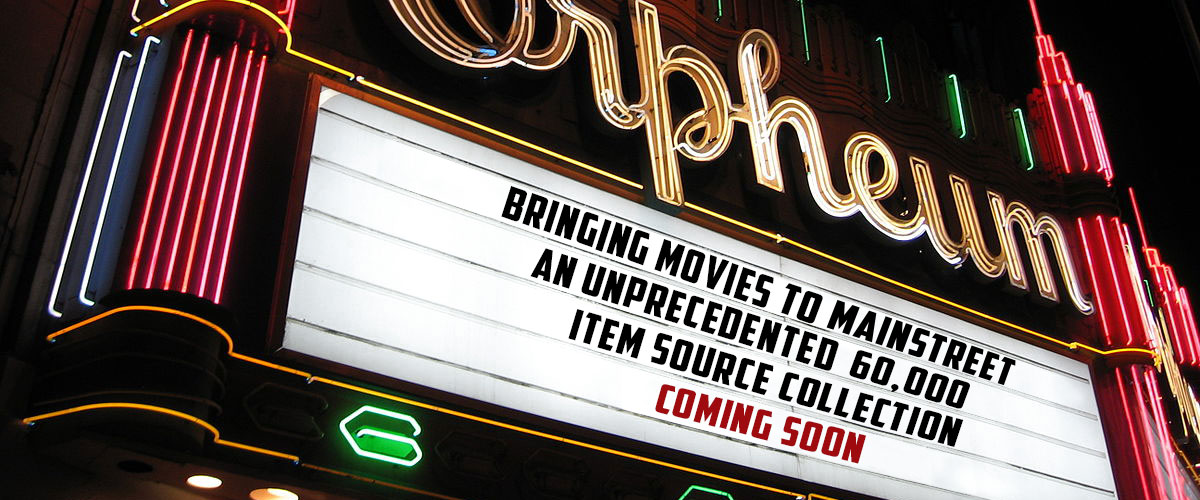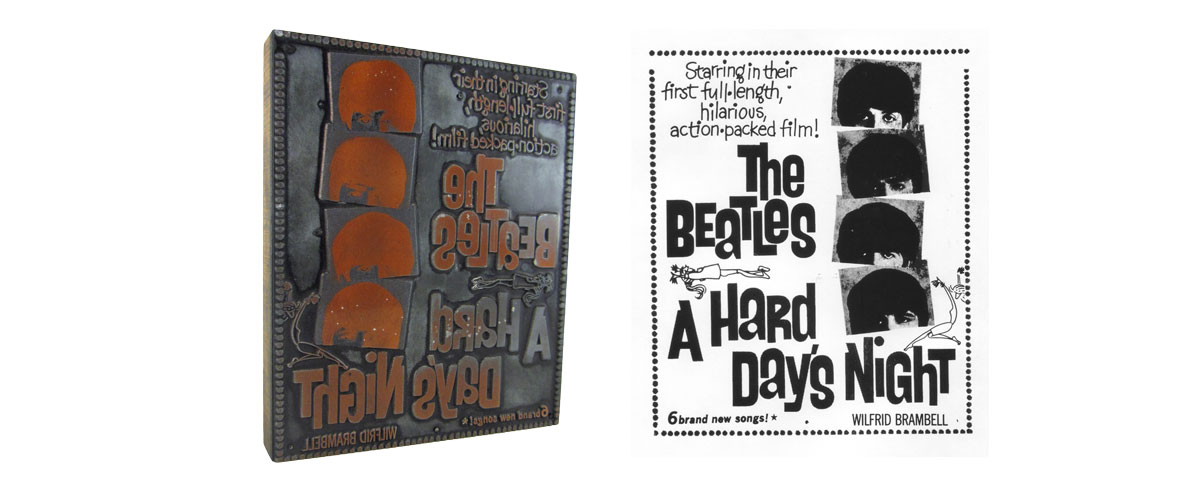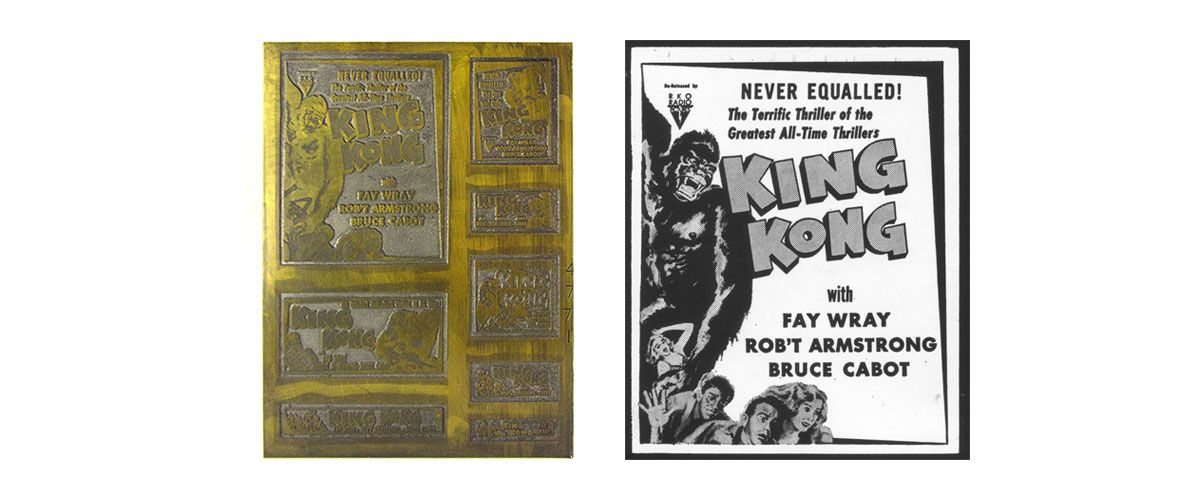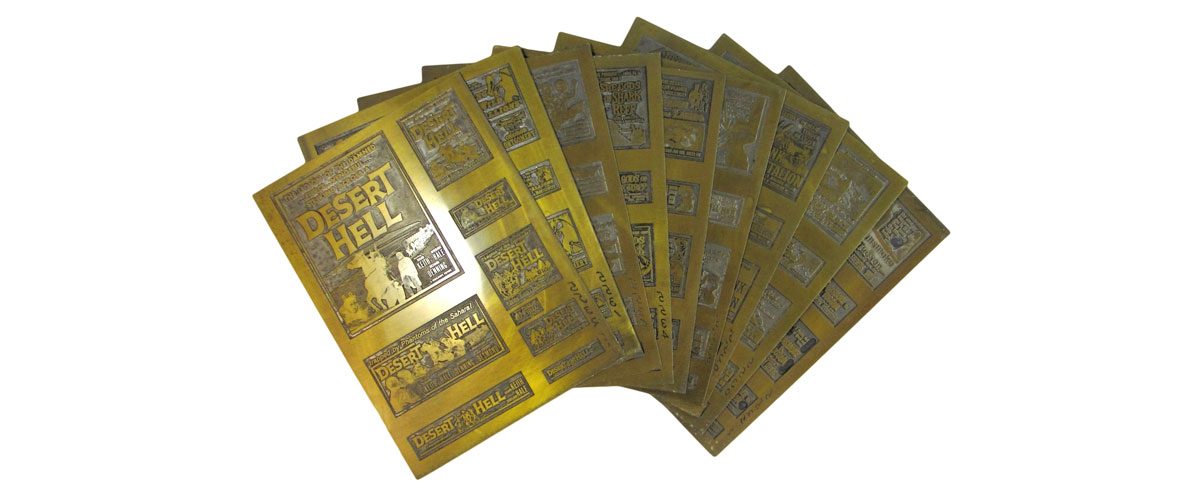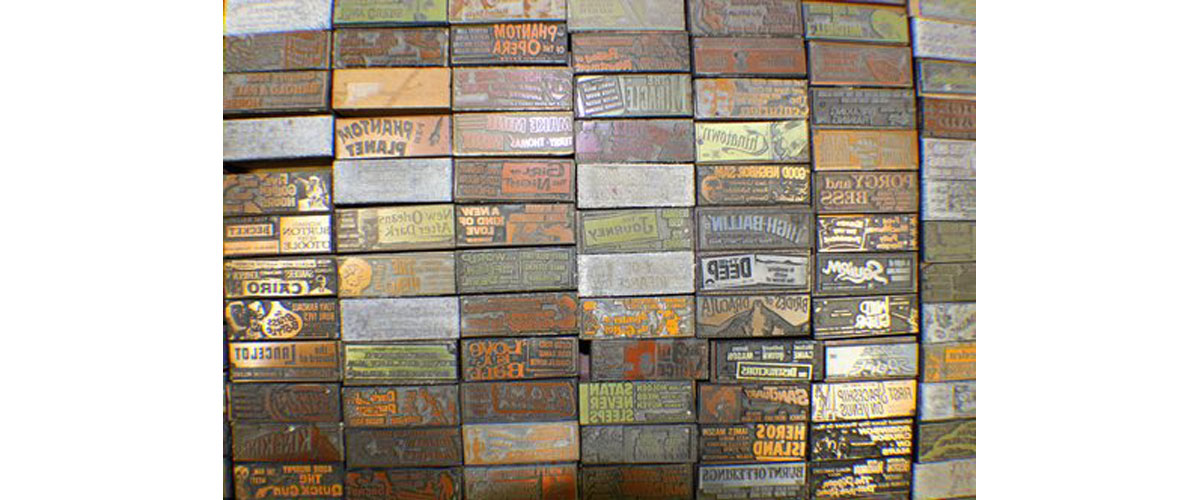Bringing Movies to Mainstreet
Samples
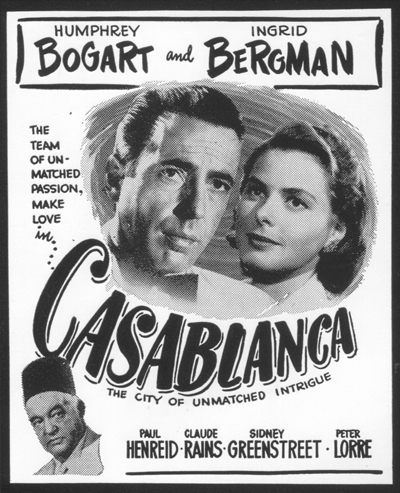
Casablanca

The Beatles
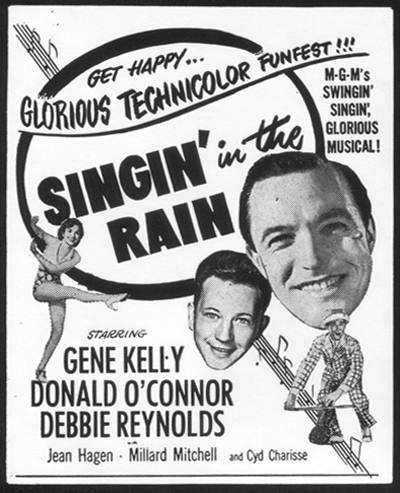
Signin' in the Rain

Planet of the Apes
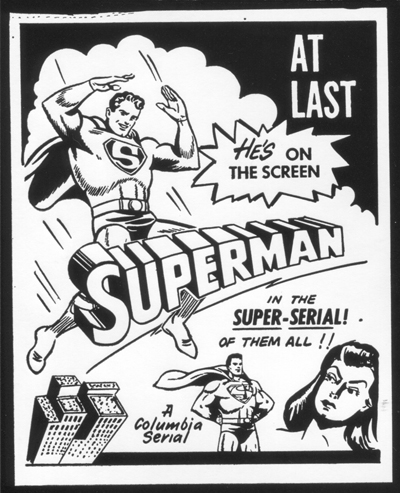
Superman
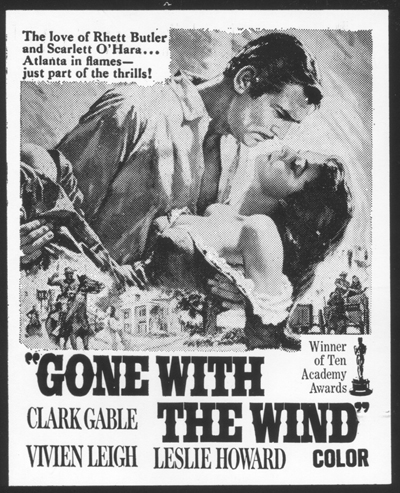
Gone with the Wind

The Wizard of Oz
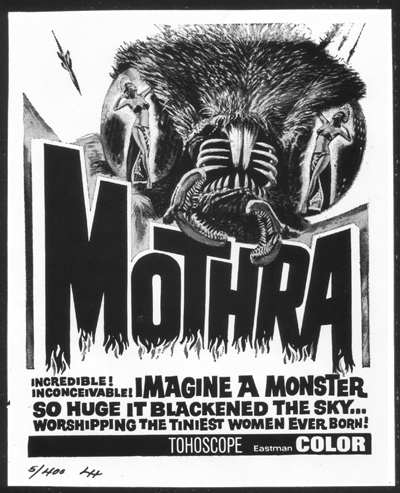
Mothra
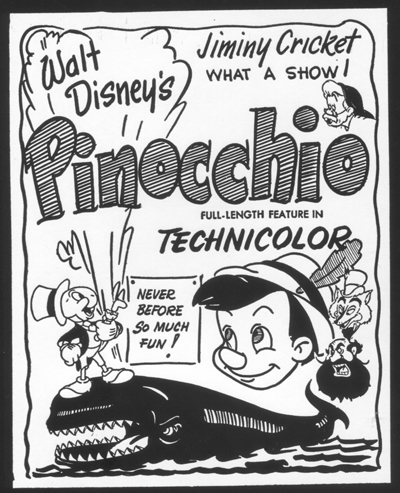
Pinocchio
The Collection
When The Jazz Singer was released to theaters in 1927, the world of motion pictures, as we’ve come to know it, began. From that date through the mid-1980s, nothing was more popular across this nation than the movies. From Saturday morning kids’ runs of cartoons and sci-fi low-budget films (The Brain That Wouldn’t Die) to such classics as Gone with the Wind, Citizen Kane and The Wizard of Oz, Americans were passionate about the movies.
Although legions of parents bemoaned the fact that their offspring often refused to “pick up a book,” competition was fierce for the section of the local newspaper where advertisements promoting movies coming to town appeared. The next Hollywood hit to appear at the Roxy (Paramount, Orpheum, etc.) on Main Street seemed more important than the outbreak of international flood or famine.
Naturally, the film studios - great and small - competed to produce the most compelling ads designed to appear in the papers. And this was true whether the “papers” were big city rags like the NY Times, the Chicago Tribune or LA Times, or the somewhat smaller Big Bend Sentinel, the Nome Nugget or the Carmel Pine Cone.
Although all the film studios - MGM, 20th Century Fox, Warner Bros., Paramount, RKO, Universal, etc. - were fiercely competitive with one another, surprisingly, the vast majority used the same “plate maker” to create the wooden blocks and metal plates necessary for presses across the Country to print the newspaper ads announcing the following week’s attractions. Designed by the art departments in Hollywood, artwork was sent to Omaha, Nebraska where KB Typesetting expertly applied age-old techniques necessary to produce, in reverse, metal images of the legendary stars and magical imagery that said to the reader” You MUST see this movie!”
From the heavy blocks and plates, pressed paper “mats” were made to be sent across the country by the thousands. In various sizes, ads for Midnight Cowboy, Jaws and The Mummy would be rushed to newspapers coast to coast. Because the plates and blocks were reasonably heavy and very costly to make, these “masters” stayed with KB. Some would think that the materials in some way could be re-used for cost savings, but KB thought differently; and so, these artifacts from the world of letterpress printing were put in storage.
More than two decades ago, two friends from Omaha stumbled across the archive. KB Typesetting had been closed for years, its demise brought on by letterpress, a more advanced printing technique. With no set plans as to what they could do with the collection, these friends found the blocks, plates and assorted ephemera fascinating and, no doubt, historic, and so they acquired it. All 60,000 items!
As luck would have it, not long after the acquisition, the new owners of the collection were watching public television’s Antiques Roadshow when movie expert/film historian Rudy Franchi appeared. The two friends then reached out to Rudy, describing their collection. In the Appraisal he later produced, Mr. Franchi refers to having seen printing blocks like those in the collection before. They were in the hands of collectors who had, at most, a few examples each. Theirs were nothing like the 60,000 blocks & plates that he was now being confronted with and which the historian eventually identified as a “source collection” and the “Holy Grail” of movie memorabilia. The collection has also been described by letterpress expert Erin Beckloff as the “find of a lifetime.” Tracing the history of movies in America, he referred to the KB Typesetting Collection as having no equal, of being essentially priceless, and as a one-of-a-kind collection.
Classic films, blockbusters, horror and monster movies, film noire, animation, musicals... the Archive has the masters that produced the advertisements for them all. African Queen, Gone with the Wind, Midnight Cowboy, Mothra, The Three Stooges, Frankenstein, King Kong, M*A*S*H*, Dirty Harry, Star Wars, Raiders of the Lost Ark, Mary Poppins, Snow White, 2001: A Space Odyssey, Psycho, Alice in Wonderland, The King and I, Planet of the Apes, Enter the Dragon, Dracula, Rebel Without a Cause…and this is only a fraction of what this remarkable collection includes!
In addition to just about every movie title imaginable, this Archive also includes masters for advertisements for legendary concerts (the Beatles, Janis Joplin, Jimi Hendrix, the Monkees, and Woodstock), as well as ads for historic fights featuring boxing icons such as Liston, Marciano, Patterson, and Johanssen. These advertisements capture the excitement of the latest legendary musician or sports icon coming into town!
With no parts to deteriorate, these blocks and plates produce ads that are just as vibrant today as they were over the decades when they thrilled and titillated young and old. Indeed, the friends purchased a small printing press where these masters have been used to crank out “re-strikes,” the paper prints that clearly visualize what the excitement was all about.
Unlike collections that remain static, that are fascinating to look at but serve no other purpose, the Bringing Movies to Main Street Collection is alive and can be income producing. The new owner of this astounding Collection – be it an individual, museum or corporation – has the ability to print from the original plates (using the vintage printing press included with the Collection or another press of the buyer’s choosing). This is the first time ever in the history of motion pictures that someone will be able to recreate these cultural treasures. High quality images can be produced, and sold, in any edition size the new owner determines. And why limit these prints to paper? These visually striking ads could be placed on everything from t-shirts to mugs! And with over 12,000 movie titles to choose from, virtually any request from movie buffs can be filled.
The new owner of the Archive will have a museum collection, a collection like no other. It is the essence of 20th century culture. It is great. Interested parties are urged to contact Guernsey’s.
For more information visit www.guernseys.com. For media inquiries or to request an interview, please contact Guernsey's at 212-794-2280 or auctions@guernseys.com.
e-Catalogue
A sneak preview of the items being offered in this collection:
Rudy Franchi, Motion Picture Collectibles Expert
For half a century, Rudy Franchi has been immersed in the world of Motion Picture collectibles, working as a dealer, historian, consultant and appraiser. He was the owner of The Nostalgia Factory from 1969 to 2005, authored Miller’s Movie Collectibles (Phaidon Press, 2000) and oversaw the production of major catalogued auctions of movie posters and memorabilia at Christie’s, Heritage and Skinner auction houses. For the Show's first seventeen years, Mr. Franchi was the on-air appraiser of movie collectibles for public television’s Antiques Roadshow where he conducted more than one hundred appraisals. He has appraised for the Library of Congress, the Cooper Hewitt (the design branch of the Smithsonian Museum), the Los Angeles County Museum, the Boston Public Library and many other fine institutions.
Links
To learn more about the history of this one-of-a-kind collection. Please visit Hollywood Movie Legends' website: www.hollywoodmovielegends.com
Press
Guernsey's welcomes inquiries from the media regarding both past and upcoming events. PDF copies of the press release and links to media coverage of our Bringing Movies to Mainstreet Collection are available below:
